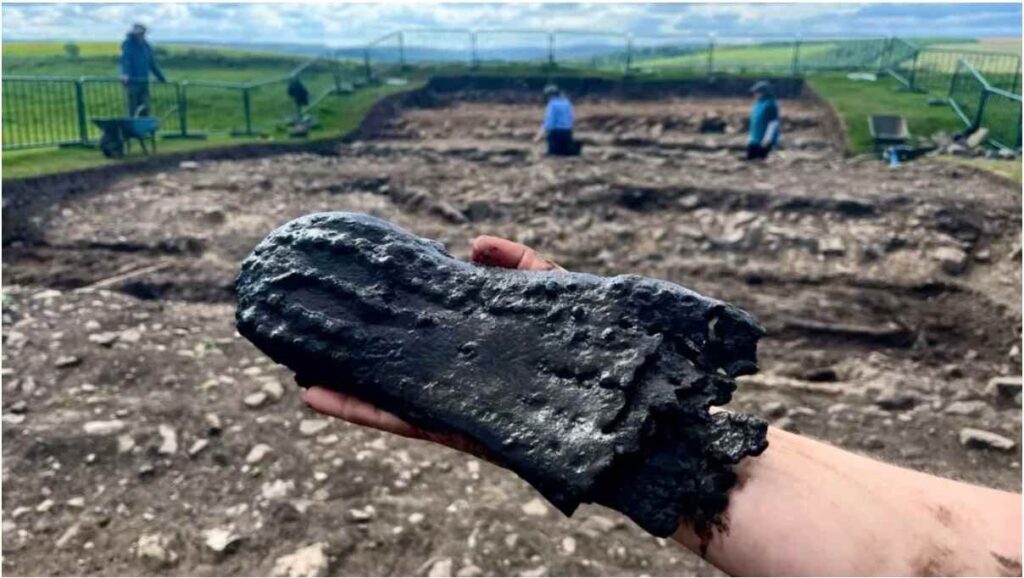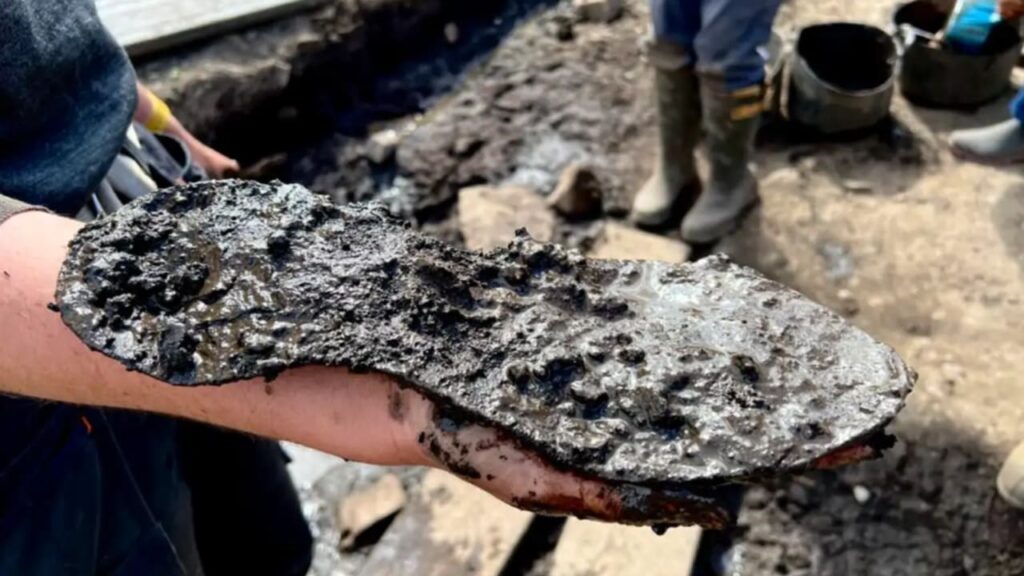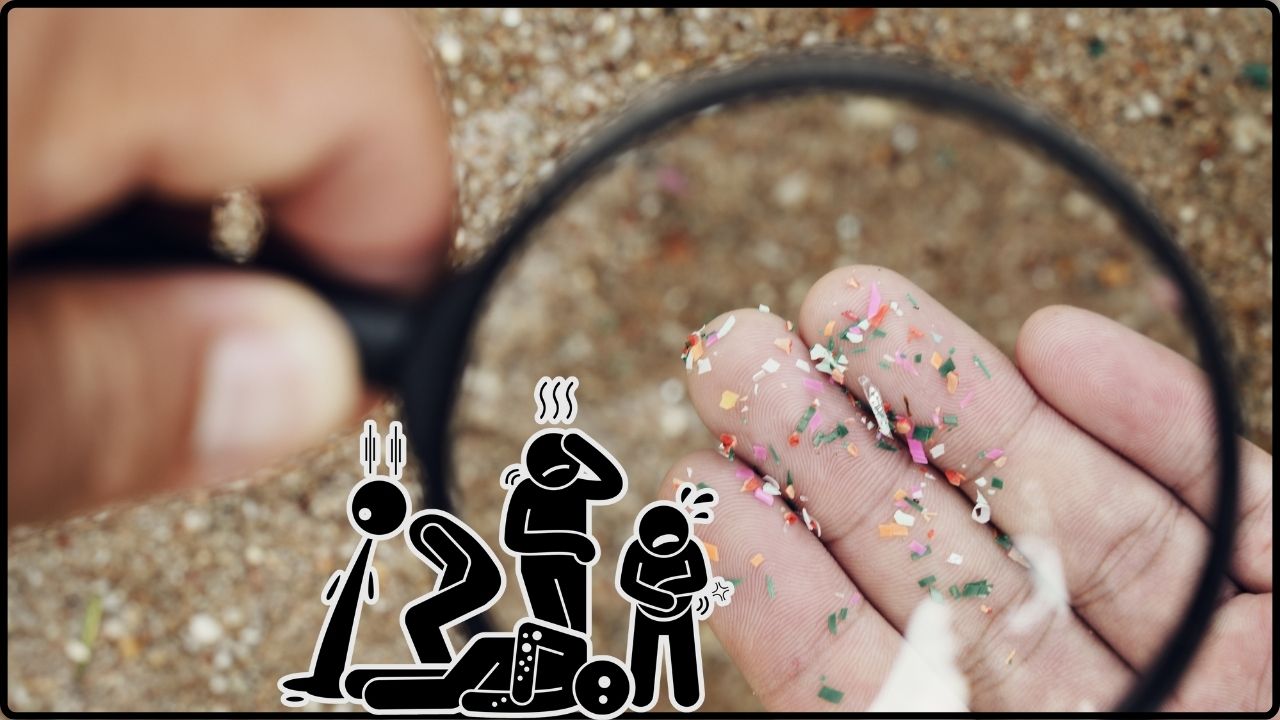
Massive Ancient Shoe Found in UK Fortress: In one of the most surprising archaeological discoveries of the year, a massive ancient Roman shoe was unearthed at Magna Fort, near Hadrian’s Wall in northern England. What made jaws drop wasn’t just the shoe’s remarkable condition after nearly 2,000 years underground—it was the giant size of the footwear. Measuring over 12 inches long, this ancient leather shoe is roughly a US men’s size 14, making it far larger than typical Roman footwear. Its unexpected size has puzzled experts and sparked global interest, raising questions about who wore it, how it survived, and what it tells us about Roman military life on the frontiers of the empire.
Massive Ancient Shoe Found in UK Fortress
| Feature | Details |
|---|---|
| Discovery Site | Magna Roman Fort (Carvoran), Northumberland, England |
| Estimated Age | Circa 2nd–3rd century AD |
| Shoe Size | US Men’s Size 14 (UK 13 / EU 49) |
| Material | Multi-layered leather with hobnails |
| Preservation | Waterlogged trench environment |
| Likely Owner | Tall Roman auxiliary soldier |
| Location | Near Hadrian’s Wall |
| Official Website | https://www.vindolanda.com |
The Fortress of Magna: Rome’s Last Outpost
Magna, or Carvoran, was one of a chain of Roman military forts built to support Hadrian’s Wall, a massive 73-mile-long fortification constructed around 122 AD. The wall marked the northern boundary of Roman Britain, separating the empire from the untamed lands of what is now Scotland.
This frontier was manned by auxiliary troops—non-Roman citizens recruited from across the empire. Soldiers came from as far as North Africa, Syria, Gaul, and the Balkans, bringing not only manpower but also cultural diversity to Britain’s cold and muddy borders.

How the Massive Ancient Shoe Found in UK Fortress?
The shoe was found in what archaeologists call an “ankle-breaker” trench—a defensive ditch designed to trap invading enemies. The trench had filled with water over time, creating low-oxygen conditions that prevented the leather from decaying. This rare preservation environment allowed archaeologists to recover the shoe in remarkable condition, along with other organic materials such as wooden structures and leather offcuts.
Items like this don’t typically survive in dry conditions, but at Magna, waterlogged soil acts as a natural time capsule, sealing artifacts from bacteria, air, and the elements.

Why the Size Is a Big Deal?
The average Roman male in antiquity stood around 5 feet 6 inches and wore approximately a US men’s size 7–8 shoe. By contrast, this shoe measures over 32 centimeters, making it at least a size 14—a size that would have stood out even in modern times, let alone 2,000 years ago.
So who wore it? Experts suspect it may have belonged to an elite soldier, possibly an archer or cavalryman from Dalmatia or the Eastern Mediterranean—regions known for producing tall, athletic recruits. Some even speculate the soldier might have had gigantism or an unusually large build for the time.
What Makes Roman Shoes So Special?
Roman shoes weren’t all sandals. The footwear recovered at Magna and other sites like Vindolanda reveal a high degree of craftsmanship and regional variety.
Features of Roman footwear:
- Multi-layered leather soles: Built to endure long marches.
- Hobnails: Small metal studs hammered into the sole for grip.
- Closed designs: Enclosed uppers to protect against cold and mud.
- Custom shaping: Roman cobblers made left and right shoes, uncommon in other ancient cultures.
Some shoes even show signs of repairs and personalization, suggesting Roman soldiers took pride in their gear, much like today’s military service members.
A Snapshot of Roman Soldier Life
This shoe gives us an incredibly personal glimpse into the daily life of a Roman soldier. It’s easy to think of history as dates and battles, but this find reminds us that ancient soldiers:
- Walked long distances in tough weather.
- Had to maintain gear and uniform standards.
- Likely experienced foot pain, injuries, and cold—just like today’s troops.
It’s even possible this very soldier stood watch on Hadrian’s Wall, staring into the misty wildlands beyond, never imagining his shoe would survive the centuries.
Why Size (Still) Matters?
Archaeologists and historians are still piecing together what the shoe’s size reveals. It could indicate:
- The presence of elite or specialized units requiring taller recruits.
- A higher level of nutrition and health for this individual, possibly linked to his origin.
- A rare case of biological variation, like gigantism.
Whether it belonged to an outlier or a normal soldier from a tall region of the empire, it challenges assumptions about standard Roman physiology and reinforces the empire’s multicultural makeup.

U.S. Connection: Roman History in American Classrooms
Roman Britain, Hadrian’s Wall, and the Roman military are core topics in American high school and college history curriculums. This discovery makes those ancient names tangible and relatable. It’s one thing to read about the Roman Empire’s might—it’s another to see a giant shoe and imagine the soldier who wore it.
Educators can use this find as a classroom tool to discuss:
- Ancient technology and material science.
- Diversity in historical armies.
- The logistics of empire-building.
Preservation Science: How Archaeologists Protect Finds Like This
After excavation, the shoe enters a careful stabilization process involving:
- Slow drying in controlled humidity.
- Treatment with conservation waxes or PEG (polyethylene glycol).
- X-ray scanning to study stitching and structure without damage.
This is crucial to ensure the artifact doesn’t crack, warp, or decompose when exposed to modern air and light.
Planning a Visit to Magna or Vindolanda
Both Magna and nearby Vindolanda Roman Fort are open to the public, and they offer:
- Live excavations with volunteer opportunities.
- Museums showcasing shoes, armor, weapons, and even handwritten letters on wood.
- Educational programs for students and families.
The Vindolanda Trust is responsible for these efforts and regularly publishes updates, research papers, and visitor guides.
Not Gold, Not Copper—Egyptians Used Iron From Space in Sacred Objects, New Study Reveals
This Iconic UK Train Route Just Got Cancelled After 100 Years – Travelers Are Furious!
This Discovery Changes Everything—Scientists Find Cobalt Can Be Harvested from Urine
FAQs
Q: Is this the biggest Roman shoe ever found?
Possibly. While other large shoes have been found, this one stands out for both its size and excellent condition.
Q: Why are waterlogged trenches so good for preservation?
They prevent oxygen from entering, which keeps bacteria from breaking down organic material like leather or wood.
Q: Could this shoe have belonged to a Roman centurion or officer?
It’s possible, but there’s no definitive rank associated with it. Size alone doesn’t confirm status.
Q: How do we know the shoe is Roman?
Based on context, design, and location. The Magna Fort has extensive Roman remains dated securely to the 2nd–3rd century AD.
Q: Are other items being found at Magna?
Yes. Excavations have revealed tools, writing tablets, wooden combs, and hundreds of other leather shoes.
Cultural Significance and What We Learn Today
This discovery is about more than footwear. It reminds us that:
- The Roman Empire was diverse, far-reaching, and technically advanced.
- Personal artifacts help us understand everyday life, not just emperors and battles.
- Ordinary objects, like a shoe, can shift our view of the past in surprising ways.
In a time when so many histories are told from the top down, a shoe like this gives voice to someone on the ground—a soldier whose steps, quite literally, shaped history.











